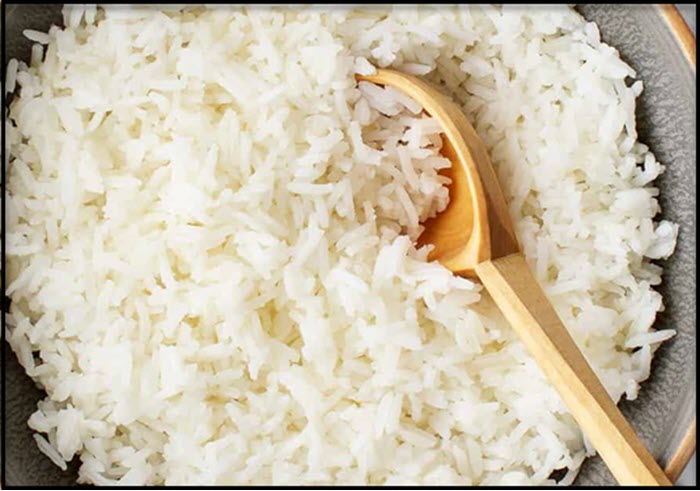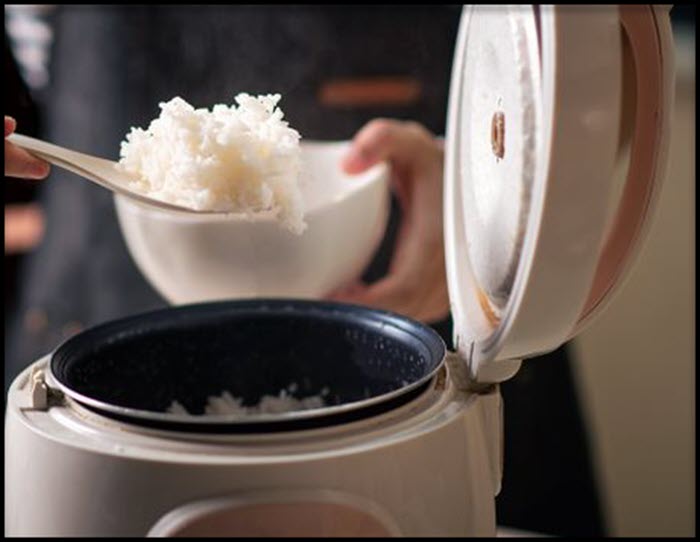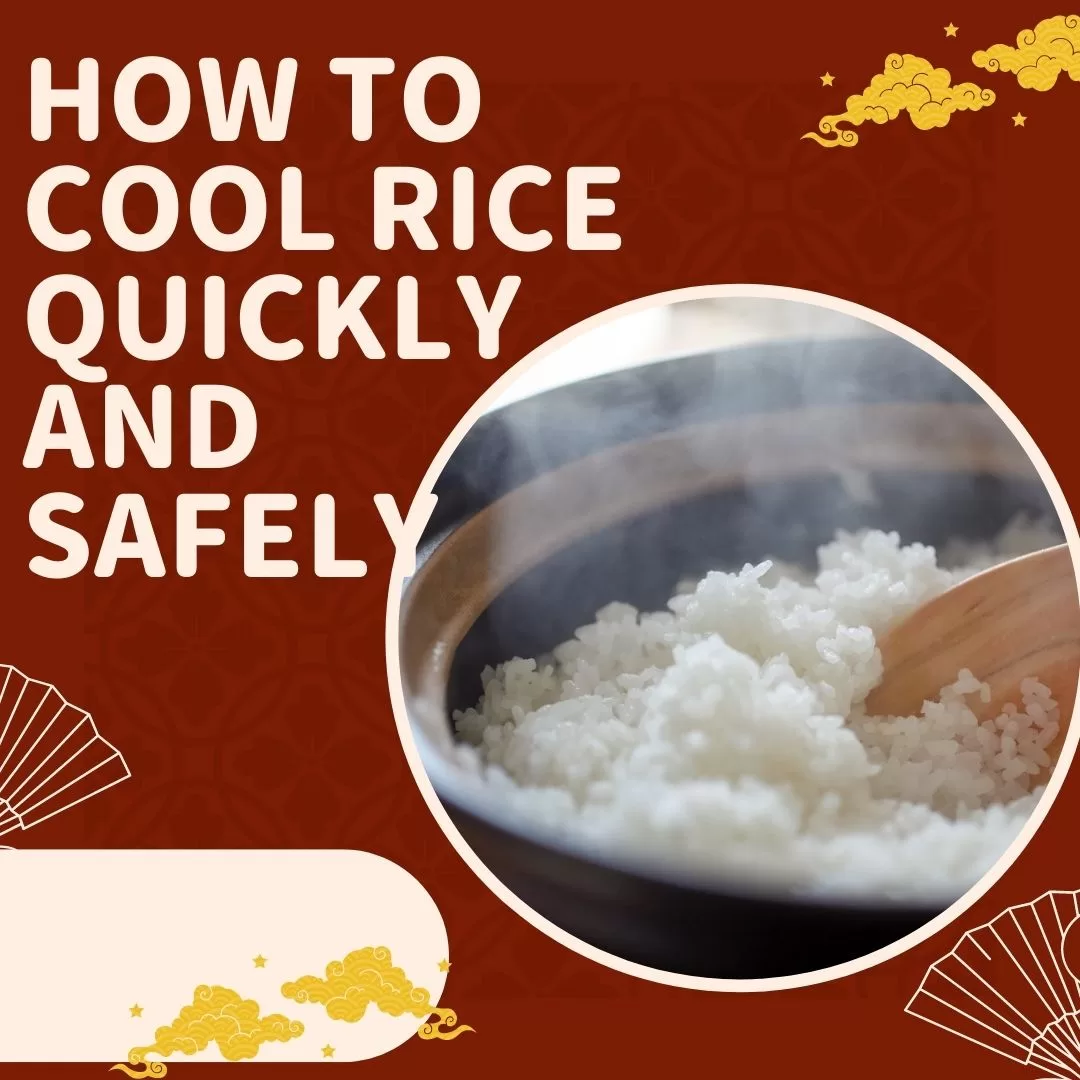Most of the dishes are usually served with rice, in fact is some countries wherein a dish without a rice is not a complete meal. But did you know that letting the rice sit in room temperature for long period of time can alter the taste as well as it can get spoiled and can no longer be eaten. It is important to know how to cool rice quickly and how to correctly reheat the rice.

How To Cool Rice Quickly
Cooling rice quickly is essential simply because bacteria’s could grow to the rice especially when cooked rice has already been on room temperature. It is important to cool the rice quickly or by immediately placing the rice inside the freezer. Doing so, harmful bacteria could not we grow. And aside from that, placing the rice inside the refrigerator if you plan to eat it some other time.
Cooked rice should not be left for a longer period of time. Therefore, the simplest way to quickly cool the rice is by using a bowl. The rice is placed on the bowl over ice water. Once the temperature reached 45 degrees Fahrenheit (5 degrees Celsius), or a smaller portions of the rice are divided and place in containers.
Eating cold rice
There are different types of dishes that uses cold rice, sushi dish is one of them. There are several health benefits from eating cooked rice that has been cooled, some of these health benefits includes cholesterol level has improved and abdominal fat is reduced.
Properly cook, cool and reheat rice
If a rice is not properly cooked, safely cooled and heated, it can make a person sick. A type of bacteria known as Bacillus cereus can live and grow in the grains of the uncooked rice. Though cooking the rice will not eliminate nor will it kill the bacteria because if at some point the cooked rice sits on the table for longer period of time, the bacteria will then release the toxin and can multiply. When that happens, eating rice with multiple bacteria can lead to food poisoning and can be detrimental to one’s health.

Cooking Rice
There are two ways to properly cook rice: using the stovetop and using a rice cooker. When using the stove top for cooking rice, all you need to do is to mix 1 part of the rice and at least 1 1/25 part of water. Bring the water to boil. Once water is boiled, you can now reduced the heat and allow it to simmer until the water is completely absorbed by the rice.
Another way is using a rice cooker. Considered to be a safe way as well as convenient way to cook the rice simply because it has many safety features such as a warming mode. The warming mode helps the rice keeps and maintains a safe temperature for cooked rice of at least 135 degrees Fahrenheit.
Cooling rice
There are times when there are rice leftovers. The best thing to do for leftover rice is to cool it down. When rice is cooled, chances for bacterial growth will be reduced, or even eliminated. As mentioned earlier, the safe temperature of the rice is 135 degrees Fahrenheit, therefore if the temperature is between 41 and 135 the chances for bacterial growth will increase and could multiply. To prevent this, you need to cool the rice fast.
To cool rice all you need to do is to simply divide the rice into portions. Each portion has about a half cup or 1 cup of rice. Put the each portions of rice in a container then place inside the refrigerator.
Another simple way to cool rice is to place it in a large container over a bowl of ice water. Make sure the water does not come in contact with the rice. A 40 degree Fahrenheit target within the four hours of letting the rice sit.
Storing Rice
When rice is placed in the refrigerator it can still be eaten within 4-6 days. But it is always recommended not to wait until the maximum waiting period and consume the rice as early as possible.
Freezing the rice is possible and somehow recommended for long term, such as at least 6 months. The flavor of the rice will change as compared to when you eat the rice earlier.
Reheat rice
There are three ways to reheat rice: microwave, oven or in a frying pan. But reheating rice in a frying is done when you will be making fried rice out of the rice.
It is important to properly cook and safely store the rice because during the reheating process, one cannot tell the difference between a safe rice and a contaminated one. There is no way for you to know aside from eating it. Reheating is done only once.

How to safely eat cold rice
Rice is a perishable food, one should be mindful with the storing and cooling process.
- Placing the rice in a shallow bowl will help cool down the rice.
- Make sure to eat the freshly cooked rice within an hour. or you can also put the rice in the refrigerator placed on airtight container.
- If rice is placed in the refrigerator to cool down, make sure to consume it within 4 days or you can throw the rice if not eaten within the specified days.
- Freezing the rice should be done after the cooling down process.
Risks that comes from eating cold rice
The risks will be reduced if the cooling process of the rice and the storing is done safely because chances are bacteria grows and multiplies on the rice and can give health related issues.
Vomiting, diarrhea and cramps in the abdomen is usually the symptoms of food poisoning caused by eating cold rice with bacteria. The symptoms start to appear within the first 15 to 25 minutes after consuming, and the symptoms could last for several hours. There is no other way to know if the cooled rice is contaminated or not, but by eating it.
As previously mentioned over and over, do not let the cooked rice sit at room temperature to prevent bacterial growth. It can either be eating the rice while it is still hot or you can safely cool rice in the freezer.
Conclusion
There is a big difference between properly storing and cooling down the rice as compared to not being able to do it. For safety, it is recommended to immediately finish cooled rice or you can place it inside the refrigerator or in the freezer for a certain period.
Since we all love rice, cooling and storing properly should be of utmost importance.

